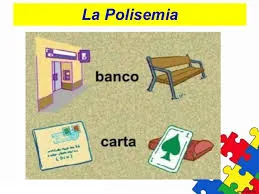
The linguistic sign is arbitrary because there is no direct relationship between the signifier and the meaning. Usually, in signs called signs, such as traffic signals, there is a certain relationship of sign elements. In contrast, in symbols, the relationship between signifier and signified is quite close, but in the linguistic sign there is no relation between its constituent elements.
Relations between meaning and signifier:
Monosemia: It is the usual relation that exists between the meaning and the signifier in a word. A signifier corresponds to a single meaning. For example, the word pen expresses a referent that can only be evoked by that signifier.

Polysemy: a word is polysemic when we can express various meanings with it. Put another way: a signifier can have several meanings. This is one of the most effective mechanisms of linguistic economy, because it allows expressing several meanings with a single signifier. It differs from homonymy in that it is a relation between the different meanings that a word has, or has had, a common origin. Example: bench to sit; bank, institution that handles money; bank of organs; Bank of fish.

The different meanings of a polysemic word sometimes look alike, but others do not: the effect of war, the news caused an effect, the effect of a ball, the personal effects.
